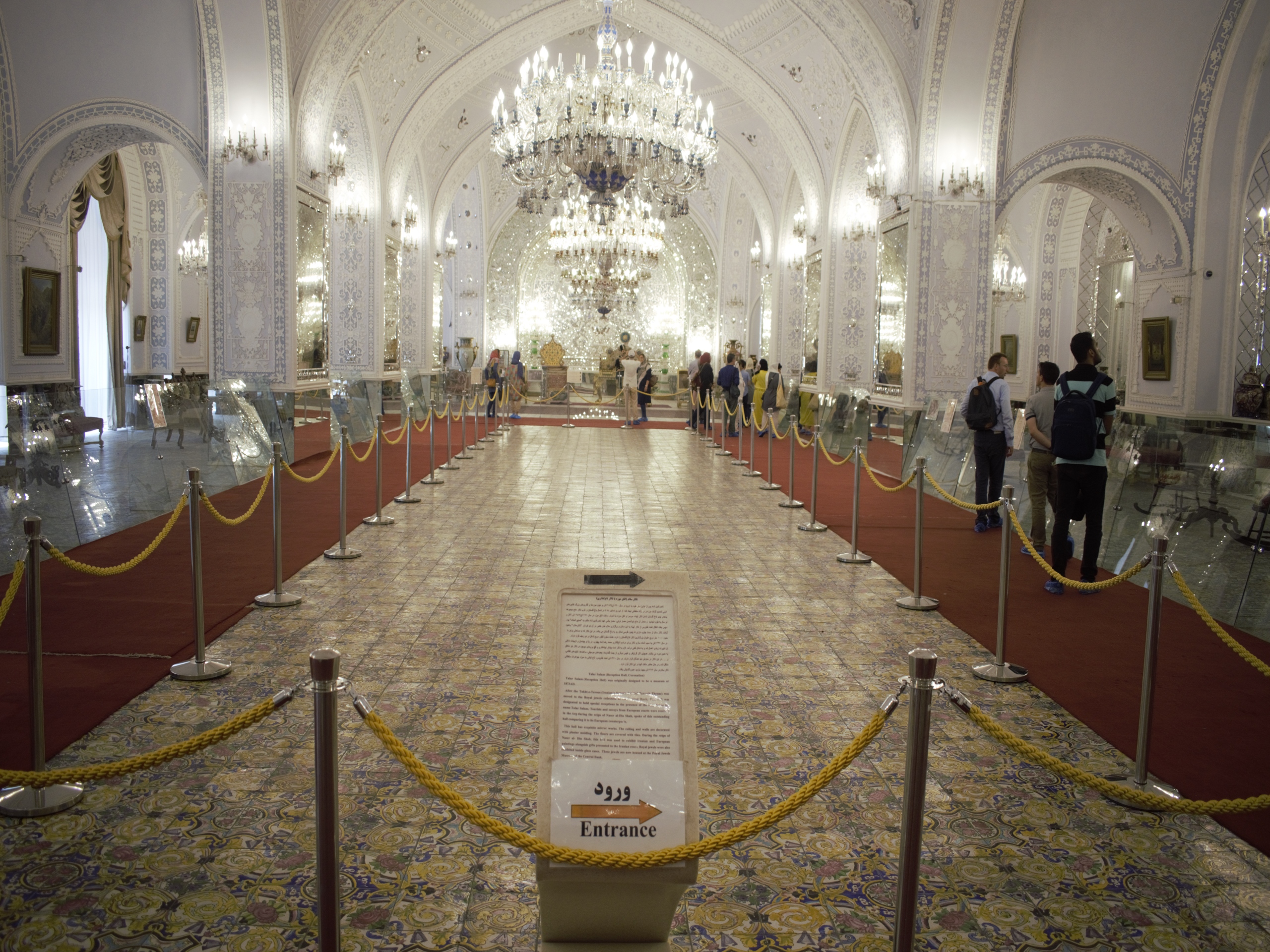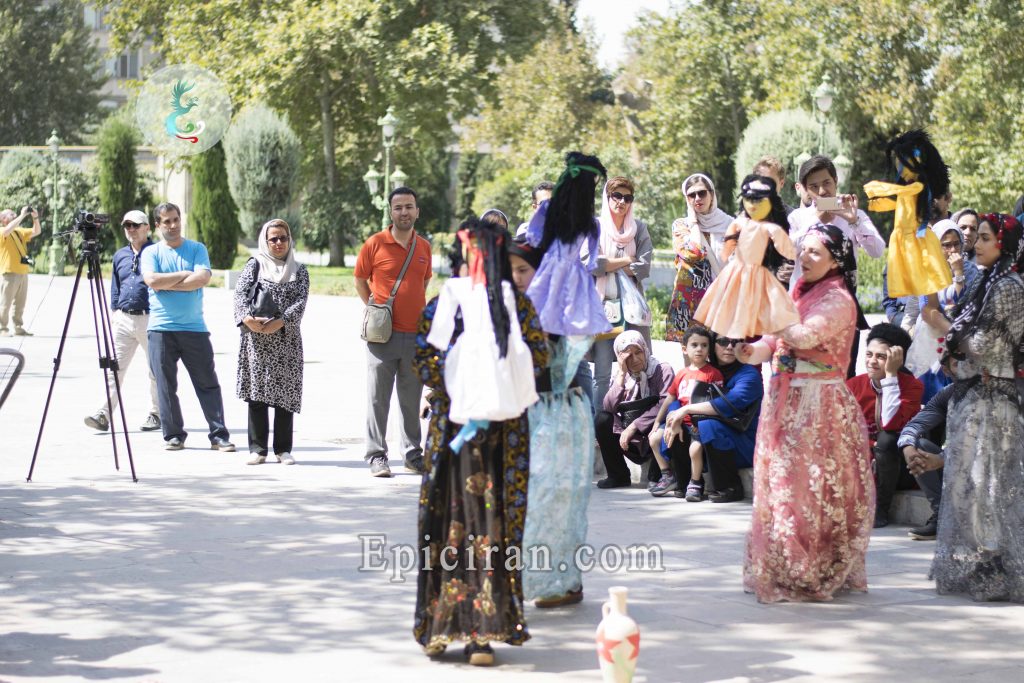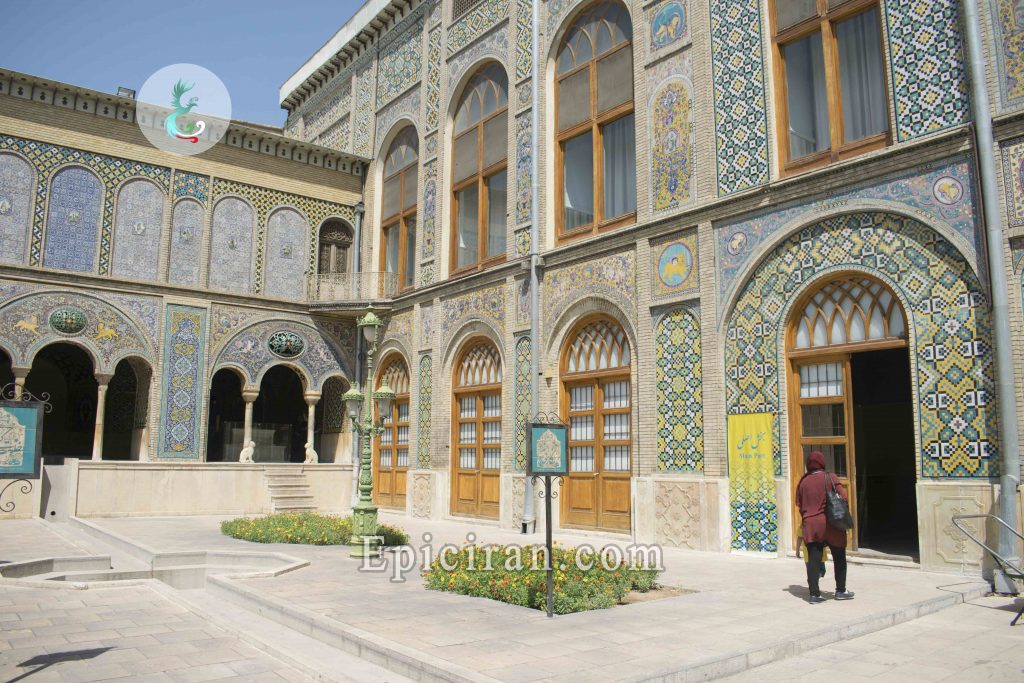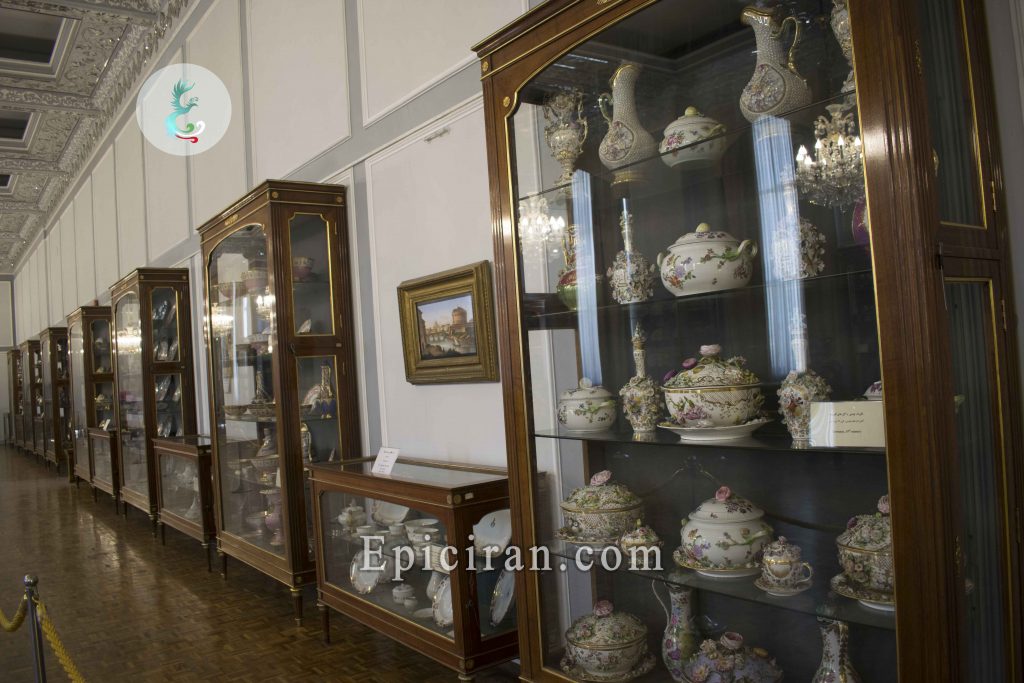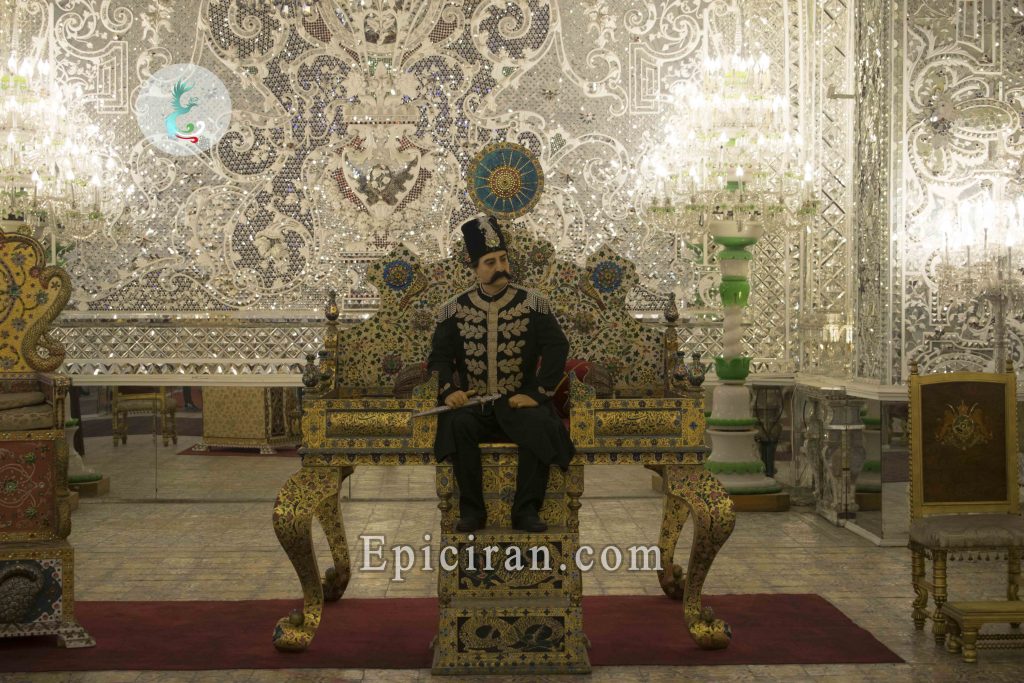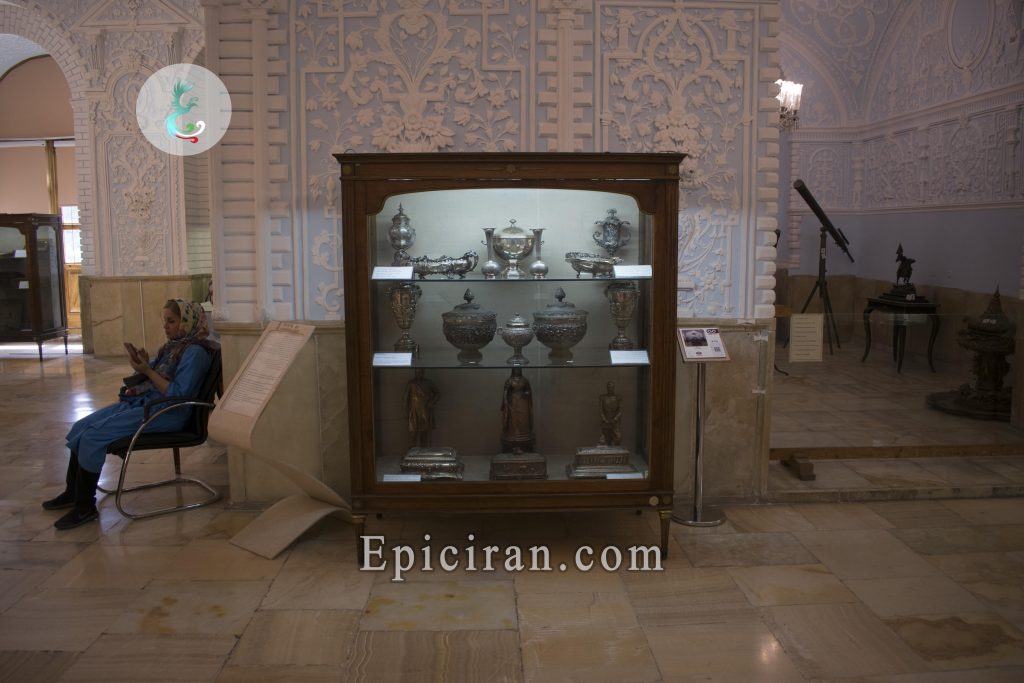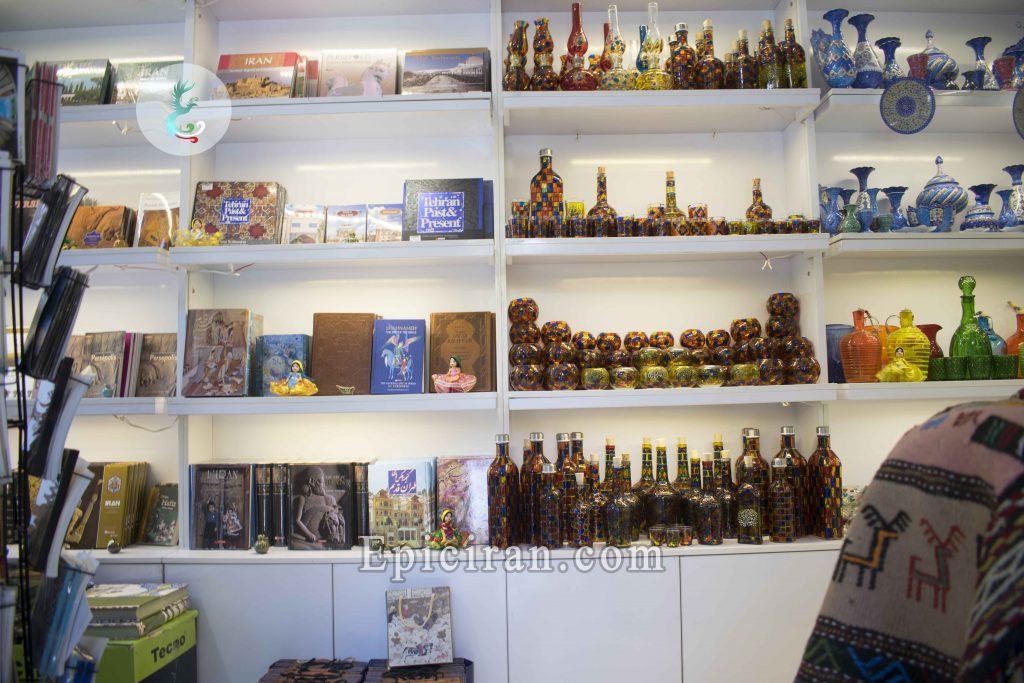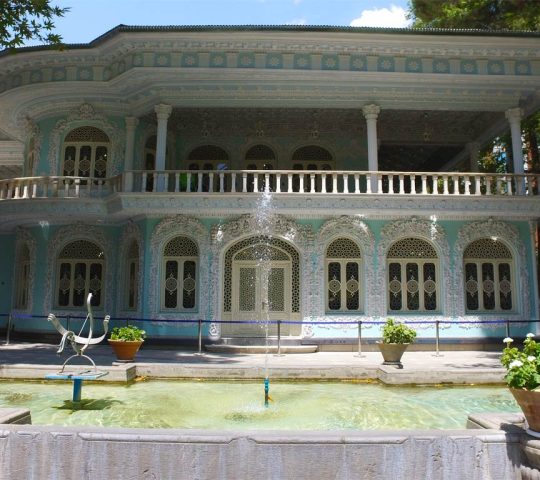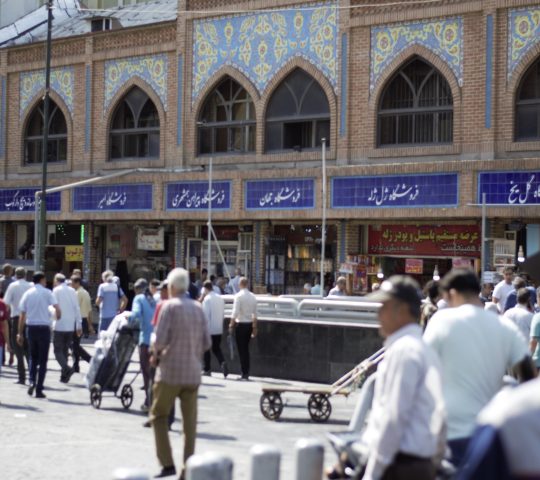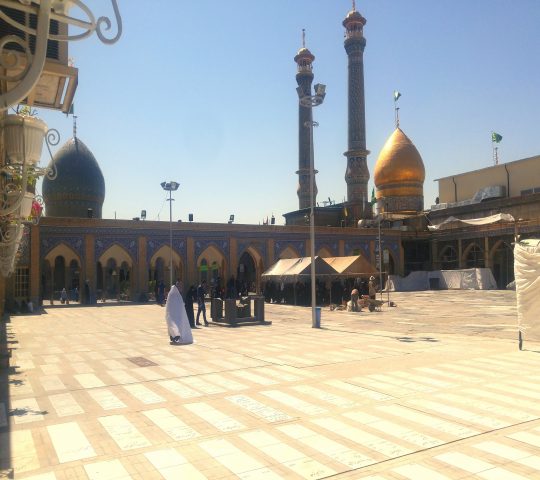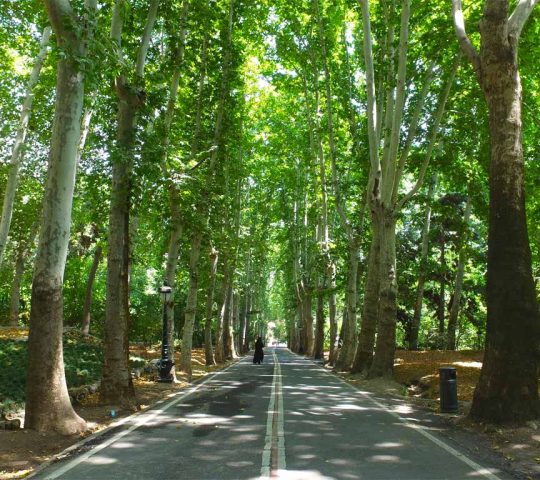The historical complex of Golestan Palace is left from Tehran’s historical citadel. The date of establishment of the historical building of the citadel of Tehran refers to the era of Shah Tahmasb I. This citadel was reconstructed in the era of Karim Khan Zand then Qajar kings settled down in this place. The historic site of Golestan Palace includes many parts, which we will continue to describe them.
Iwan of Marble Throne (Iwan-e Takht-e Marmar)
The marble throne was the place where the people were revered to the king in front of the king. It is believed that some parts of the marble throne would return to the era of Karim Khan Zand. During the period of the Qajar Dynasty, this throne changed a lot and became this current form. The ultimate official ceremony held on this Iwan was the coronation of Reza Shah of the Pahlavi Dynasty.
Hall of Mirrors (Talar-e Ayineh)
The Mirror Hall is one of the famous halls of the Golestan Palace. The fame of this hall, furthermore to its decorations, is mostly due to the famous painting by Kamal-ol-Molk, a great Iranian painter which keep in this hall.
Diamond Hall (Talar-e Almas)
Diamond Hall is located on the south side of Golestan Palace. This hall was built in the era of King Fath-Ali Qajar and was dedicated to the display of the artwork of the king’s era. It is named for the diamond because of interior mirror works.
Salam Hall (Talar-e Salam)
The construction of this hall was conducted directly under the supervision of King Naser al-Din Qajar. This hall has many decorations and mirrors.
Hall of Dishes (Talar-e Zoruf)
The Chamber of Dishes is the latest Golestan Palace Hall which was built during the 2nd Pahlavi king. After the construction of this hall, all the gifts were given by the European kings to the Pahlavi and Qajar kings were transferred to the palace. The most interesting of these gifts are the dishes of Napoleon, the dishes of Nikolai I, Jewelry decorated dishes of Queen Victoria.
Ivory Hall (Talar-e Aaj)
This hall was built during the Qajar era and was the former place to hold the gifts that were transferred to the Hall of Dishes during the period of Pahlavi II. During the reign of Pahlavi, the palace was rebuilt and became a catering place for the guests of the king.
Hall of Spring House (Howzkhaneh)
The hall was also built during the period of King Nasir al-Din and was the place for the present gifts from European kings to Qajar kings.
Karimkhani Privacy (Khalvat-e Karimkhani)
The Karimkhani venue is located in the northwest corner of the Golestan Palace. A smaller marble throne than the main marble throne of Golestan Palace is located in this part of the palace. This place is known as King Nasser-al-Din Qajar, who loved this place, and the Qajar king’s gravestone is also in this place.
Shams-ol-Emareh in Golestan Palace
Mansion of the Sun or Shams-ol-Emareh is one of the most prominent and beautiful buildings in the Golestan Palace. This mansion is famous for its ornamentation and height.
Jewelry Hall (Talar-e Berelian)
This hall was built during the period of King Naser al-Din Qajar and was reconstructed during the period of King Mozaffar al-Din Qajar. During the Pahlavi period, meetings and ceremonies were held with foreign leaders.
Abyaz Palace (Kakh-e Abyaz)
The Golestan Palace was also built during the Qajar period and used for kept the Ottoman king’s gifts were received to King Nasir al-Din. In the era of the Pahlavi, the palace was dedicated to holding meetings of the government, until it became an Ethnological Museum after its changes.
Special Museum
In the Qajar period, the museum was the site for keeping valuable and silver dishes to Qajar kings. In the era of Pahlavi, the building became a museum, and the gifts given to the Qajars were presented.
Gallery of Golestan Palace (Negarkhaneh)
In the era of Pahlavi, this place was assigned to the Royal Guard. After the reconstruction of this place, paintings were transferred to the Golestan Palace and now the paintings of the great Iranian painters are kept at this place.

